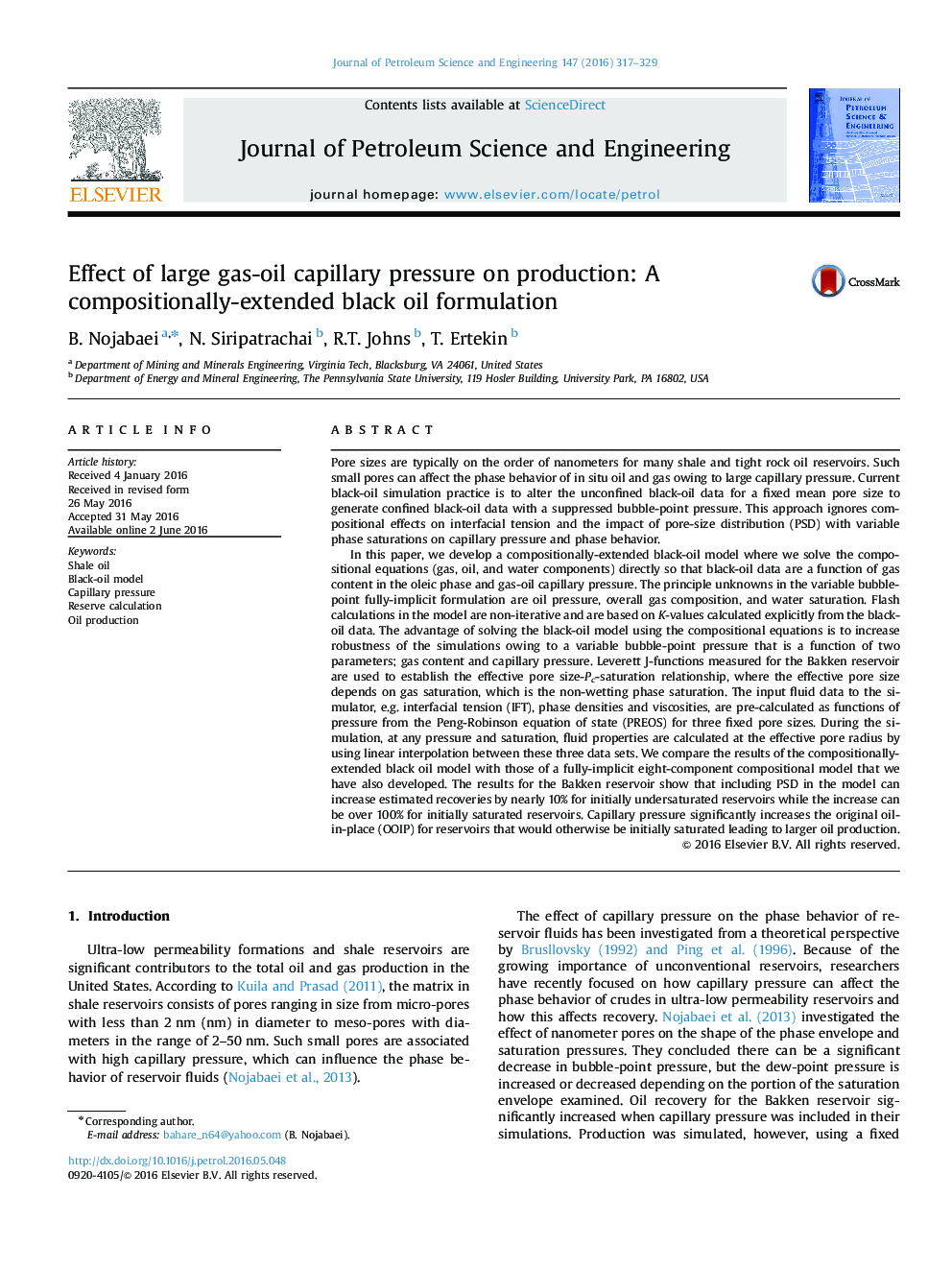| Article ID | Journal | Published Year | Pages | File Type |
|---|---|---|---|---|
| 8125689 | Journal of Petroleum Science and Engineering | 2016 | 13 Pages |
Abstract
In this paper, we develop a compositionally-extended black-oil model where we solve the compositional equations (gas, oil, and water components) directly so that black-oil data are a function of gas content in the oleic phase and gas-oil capillary pressure. The principle unknowns in the variable bubble-point fully-implicit formulation are oil pressure, overall gas composition, and water saturation. Flash calculations in the model are non-iterative and are based on K-values calculated explicitly from the black-oil data. The advantage of solving the black-oil model using the compositional equations is to increase robustness of the simulations owing to a variable bubble-point pressure that is a function of two parameters; gas content and capillary pressure. Leverett J-functions measured for the Bakken reservoir are used to establish the effective pore size-Pc-saturation relationship, where the effective pore size depends on gas saturation, which is the non-wetting phase saturation. The input fluid data to the simulator, e.g. interfacial tension (IFT), phase densities and viscosities, are pre-calculated as functions of pressure from the Peng-Robinson equation of state (PREOS) for three fixed pore sizes. During the simulation, at any pressure and saturation, fluid properties are calculated at the effective pore radius by using linear interpolation between these three data sets. We compare the results of the compositionally-extended black oil model with those of a fully-implicit eight-component compositional model that we have also developed. The results for the Bakken reservoir show that including PSD in the model can increase estimated recoveries by nearly 10% for initially undersaturated reservoirs while the increase can be over 100% for initially saturated reservoirs. Capillary pressure significantly increases the original oil-in-place (OOIP) for reservoirs that would otherwise be initially saturated leading to larger oil production.
Related Topics
Physical Sciences and Engineering
Earth and Planetary Sciences
Economic Geology
Authors
B. Nojabaei, N. Siripatrachai, R.T. Johns, T. Ertekin,
